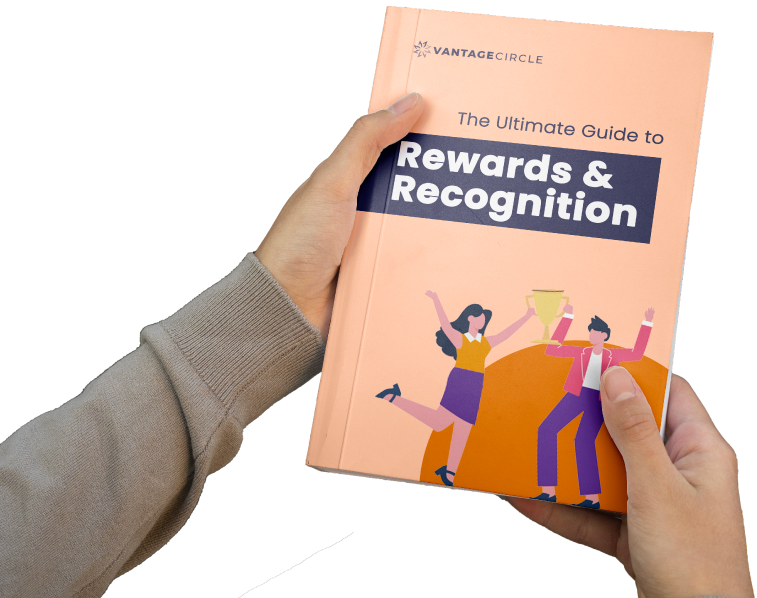Communicating Total Rewards to Employees: Importance, Strategy and Challenges

A Global Employee Recognition and Wellness Platform
Let's be honest - most employees have no clue what they're actually worth to your company. They see their paycheck and think that's it. Meanwhile, you're spending thousands more on their benefits, development, and perks that they barely notice.
Here's the kicker: companies spend an average of 30% of payroll on benefits alone. That's massive. But if Sarah from accounting doesn't realize her health insurance is worth $800 a month, her professional development budget is $2,000 annually, and her flexible work arrangement saves her $200 monthly in commuting costs - you're basically throwing money into a black hole.
Almost 90% of Total Rewards Leaders feel unprepared and lack the necessary skills and structure to support their business through the expected changes over the next three years.
However, smart companies have figured this out. They communicate their total rewards to employees. The result? Better talent attraction, higher retention rates, and employees who appreciate what they're getting.
Key Takeaways
- What Are Total Rewards?
- Why Communication is a Strategic Business Lever
- The Importance of Communicating Total Rewards to Employees
- How to Build an Effective Communication Strategy
- The Critical Role of Leadership and Managers
- The Digital Transformation of Rewards Communication
- Overcoming the Communication Challenges for Total Rewards
What Are Total Rewards?
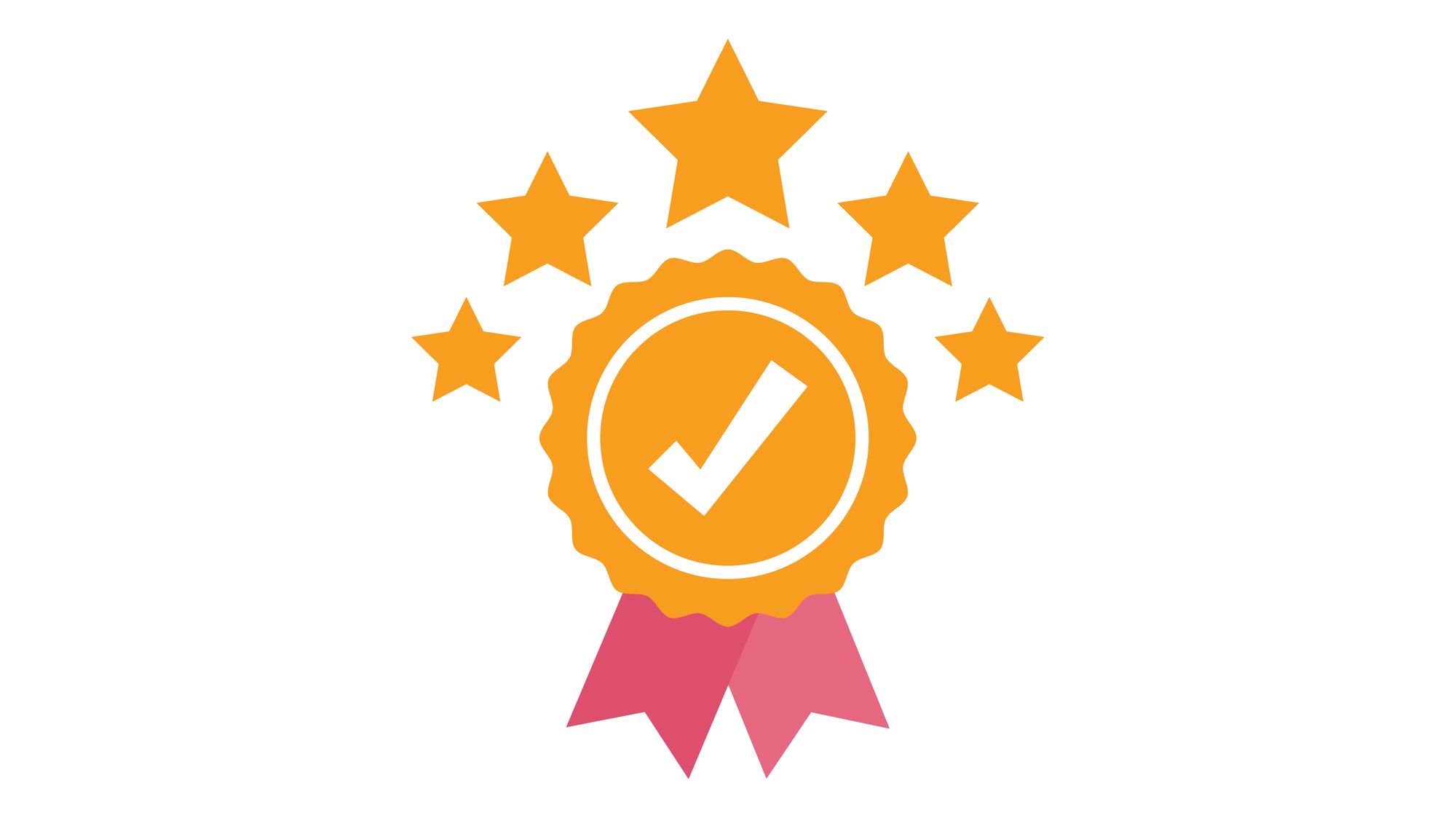
Total rewards isn't just HR jargon - it's everything of value an employee receives from working at your company. Think bigger than salary and benefits.
The five pillars of total rewards include:
1. Compensation – It includes things like:
-
Base salary
-
Bonuses
-
Commissions
-
Equity, and any other monetary rewards
2. Benefits – They cover:
-
Health insurance
-
Retirement plans
-
Paid time off
-
Life insurance
-
Disability coverage
3. Work-Life Balance – A critical and important part of the work culture that includes:
-
Flexible schedules
-
Remote work options
-
Wellness programs
4. Recognition & Performance – Recognition and performance is a core source of total awards which consists of:
-
Awards
-
Promotions
-
Career advancement opportunities
5. Development & Career Growth – Growth is an integral part of an employee’s tenure. It focuses on essential things like:
-
Training programs
-
Mentorship
-
Tuition reimbursement
-
Skill development
-
Leadership opportunities
Here's what most companies miss: employees typically only know their salary, maybe their health insurance premium, but everything else? It's invisible.
That's where communication becomes your secret weapon.
Why Communication is a Strategic Business Lever

Communicating total rewards isn't just about making people feel good (though that's a nice side effect). It's about maximizing your return on investment in human capital.
Talent Attraction That Actually Works
When you can clearly articulate the full value of working for your company, you're not just competing on salary anymore. You're showing candidates the complete picture.
A candidate might get offered $80,000 elsewhere, and they can make the switch. However, you have to show them their total rewards package. It might go up to $105,000 - including health benefits, professional development, flexible work arrangements, and growth opportunities. This suddenly makes your offer looks pretty compelling.
Employee Retention Through Value Recognition
People leave when they don't feel valued. But here's the thing - they can't feel valued for things they don't know exist.
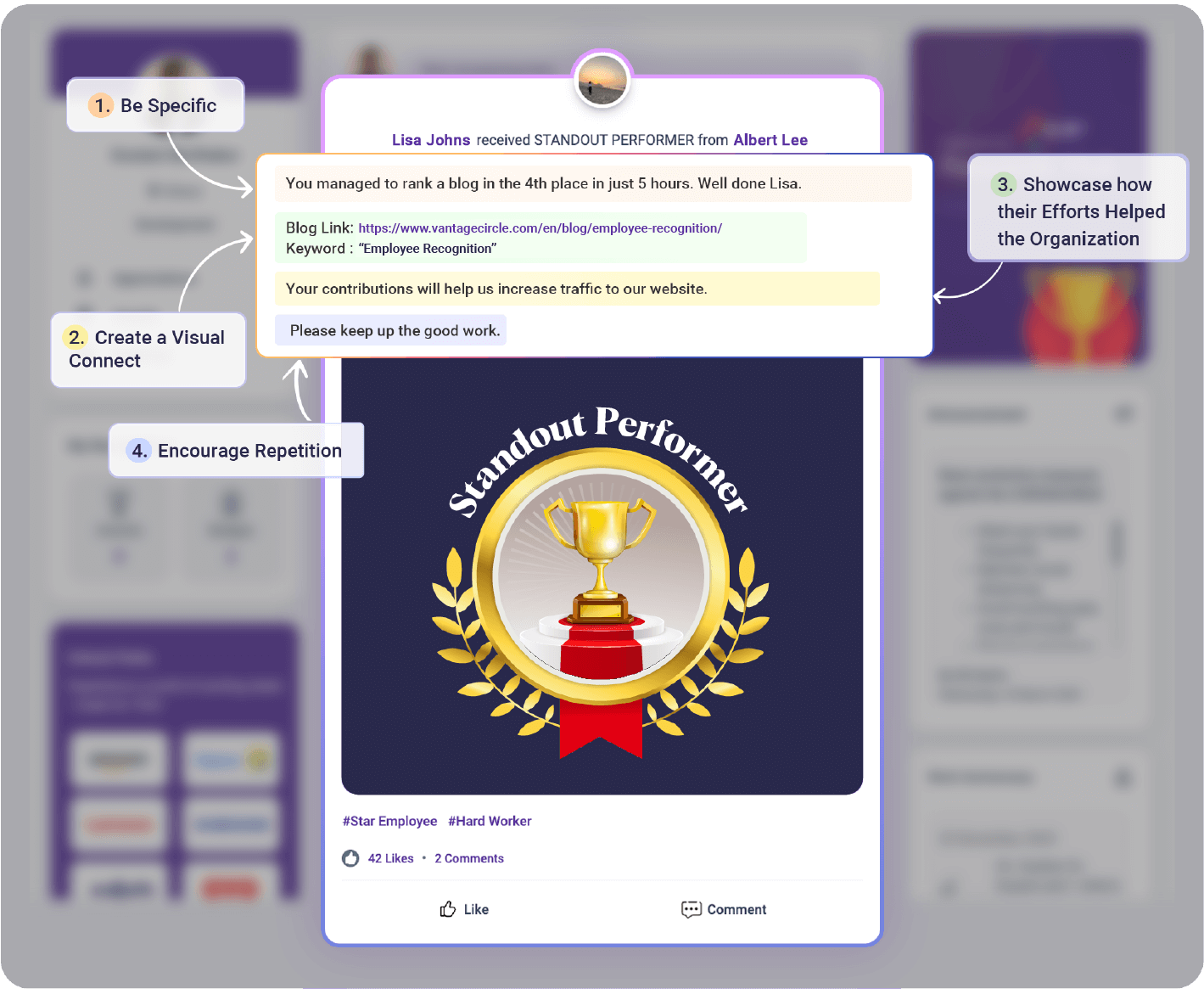
(Source: Vantage Recognition)
When employees understand their total rewards package, they're more likely to stay.
Why? Because they realize how much they'd be giving up by leaving. That $2,000 professional development budget, the flexible schedule worth $3,000 annually in saved commuting costs, the comprehensive health coverage - it all adds up.
Engagement Through Transparency
Engaged employees are 18% more productive and 23% more profitable. But engagement starts with understanding. When people know what they're getting, they feel more connected to the company.
It's basic psychology - you can't appreciate what you don't understand. Clear total rewards communication creates that "aha" moment where employees realize their company is investing in them beyond just a paycheck.
Productivity Boost Through Appreciation
Here's where it gets interesting. When employees understand their total rewards value, they're more likely to use those benefits effectively. They take advantage of wellness programs, utilize professional development opportunities, and maximize their work-life balance benefits.
The result? Healthier, more skilled, less stressed employees who perform better. Your total rewards investment actually starts paying dividends instead of sitting unused.
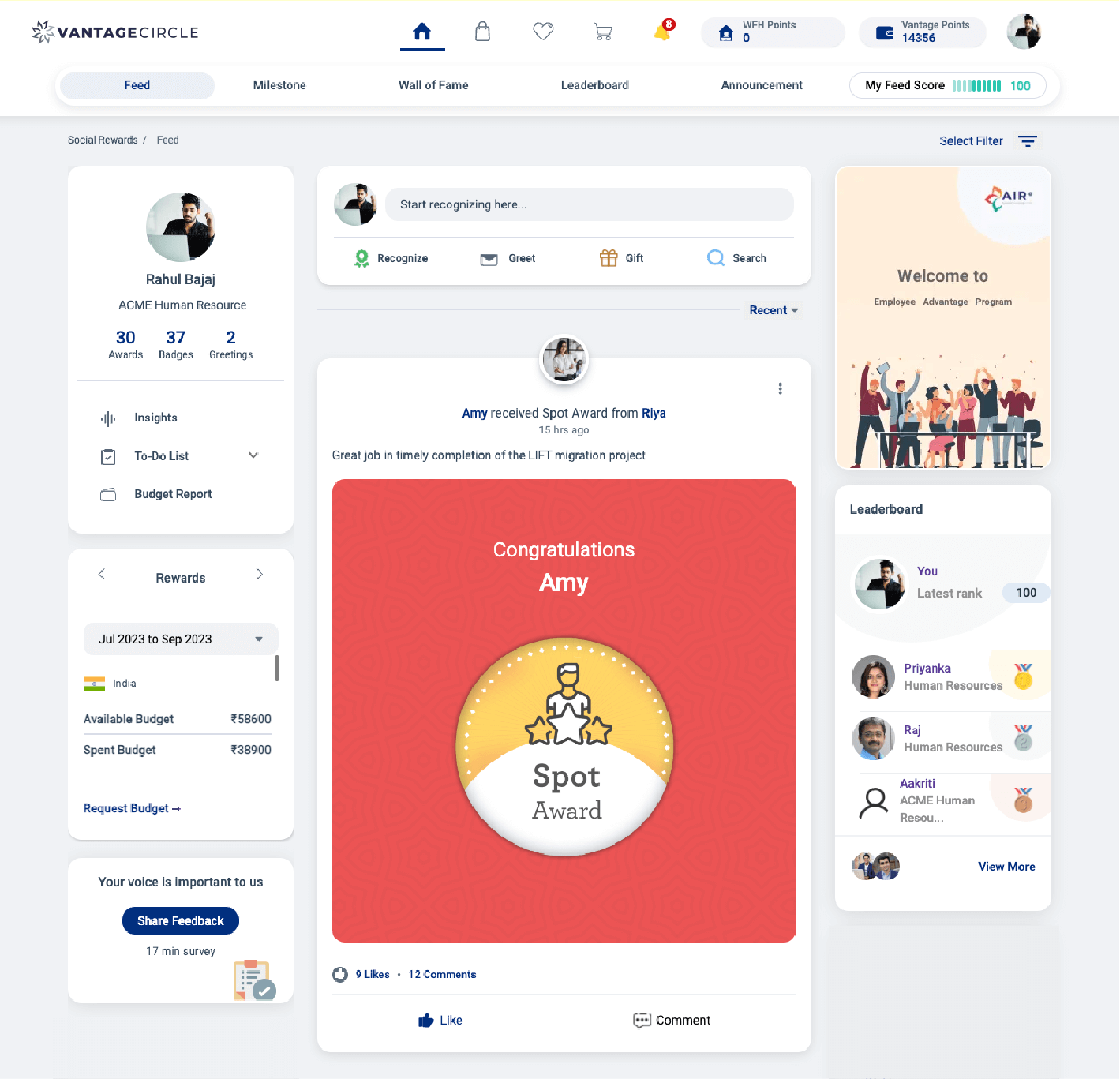
(Source: Vantage Recognition)
Aon's research indicates that employees who highly value their Total Rewards package are twice as likely to be engaged, 1.5 times more trusting of their leaders, and twice as likely to stay with their employer.
Think about it this way: you're already spending the money on total rewards. The question is whether you're getting full value from that investment. Most companies aren't - simply because they haven't figured out how to communicate effectively.
The workplace has changed. Employees want transparency; they value benefits beyond salary, and they're making career decisions based on the complete package, not just the paycheck. Companies that master total rewards communication win the talent game.
So, here's the real question: are you letting your total rewards investment work for you, or are you keeping it a secret from the people who matter most?
The Importance of Communicating Total Rewards to Employees

This isn't about being "nice" to employees. It's a hard business strategy that directly impacts your bottom line.
Increased Awareness and Appreciation
When employees don't know what they're getting, they can't appreciate it. A survey found that only 58% of employees fully understand their organization's reward strategies. That means 42% of your workforce is walking around clueless about what you're investing in them.
Fix the communication? Suddenly people realize they're getting way more than they thought.
Improved Retention and Loyalty
Here's the math: replacing an employee costs 50-200% of their annual salary. A clear total rewards communication program costs a fraction of that.
When people understand their full package value, they're less likely to jump ship for a slightly higher salary elsewhere. They start thinking, "Wait, I'd lose all this?"
Enhanced Engagement and Trust
Transparency builds trust. Period. When you openly communicate what employees are getting, it shows you've got nothing to hide.
80% of organizations gather employee feedback to evaluate the impact of their total rewards strategy across different generations. This gives a clear picture about the total rewards strategy.
It also showcases that the organization is there to listen. This improves trust.
Trust drives engagement, and engagement drives performance.
Squashing Rumors and Misinformation
It’s not always what’s said in meetings—it’s what’s said in the break room.
"They’re cutting our benefits."
"Other companies treat their people better."
In the absence of clear communication, speculation spreads fast.
That’s why transparent total rewards messaging matters more than ever.
Compliance and Risk Mitigation
Some benefits of communication isn't optional - it's legally required. ERISA (Employee Retirement Income Security Act) disclosures, healthcare notifications, retirement plan updates.
Poor communication doesn't just hurt morale; it can land you in legal trouble. Clear, consistent total rewards communication keeps you compliant and protected.
How to Build an Effective Communication Strategy

Most companies wing it when it comes to total rewards communication. They send an annual benefits email and call it a day. That's not strategy - that's checking a box.
Real communication strategy rests on four pillars, then gets amplified through multiple channels.
The Four Pillars of Strategic Communication
1. Transparency: No sugarcoating, no hidden catches. If there's a deductible, mention it. If coverage has limits, explain them. Employees can handle the truth - they can't handle surprises.
2. Consistency: Your message should be the same whether it's coming from HR, managers, or your benefits portal. Mixed messages kill credibility fast.
3. Personalization: Generic communication gets ignored. Show employees what their specific benefits are worth, not what someone else might get.
4. Timeliness: Don't wait until open enrollment to talk about benefits. Communicate when it matters - when people are making decisions or life changes.
A Multi-Channel, Multi-Modal Approach
One communication method doesn't work for everyone. Some people read emails, others prefer videos, and some need face-to-face conversations.
-
Digital Hubs and Portals: Create a one-stop shop where employees can see everything. Not just benefits enrollment - their full total rewards picture with real dollar values.
-
Personalized Total Rewards Statements (TRS): Show each employee exactly what their package is worth. "Sarah, your total rewards value is $87,400 - here's how we calculated it."
-
Manager-Led Conversations: Train managers to have meaningful total rewards conversations. They're often the most trusted voice for employees.
-
High-Impact Visual Media: Infographics, videos, and interactive tools make complex benefits easier to understand. People remember what they see.
-
Targeted Campaigns and "Just-in-Time" Communication: New parent? Send parental leave information. Getting married? Here's how to update beneficiaries. Right message, right time.
-
Interactive Forums (Virtual and In-Person): Q&A sessions, benefits fairs, and lunch-and-learns where employees can ask questions and get real answers.
-
Traditional Methods: Don't forget printed materials, payroll stuffers, and good old-fashioned face-to-face meetings. Some people still prefer paper.

The Critical Role of Leadership and Managers
You could have the most gamified benefits portal in the world, with a visually stunning design.
But if your managers can’t explain what’s in it, it won’t matter.
Employees trust their managers more than HR, more than execs—and definitely more than a company-wide email.
-
Leadership Support: If your CEO doesn't understand or champion total rewards, neither will anyone else. Leadership sets the tone. When executives openly discuss the value of benefits and development opportunities, it gives managers permission to do the same.
-
Manager Enablement: Your managers are your communication army, but most don't know they're enlisted. They need clear talking points, easy-to-understand materials, and the confidence to have these conversations.
-
Training: Teach managers how to connect total rewards to individual career goals. It's not enough to say "we have great benefits." They need to explain why those benefits matter to each person.
-
Tools: Give managers simple calculators, comparison sheets, and real examples. "Here's how to show someone their total value" shouldn't require a PhD in benefits administration.
-
Confidence-Building: Most managers avoid benefits conversations because they're scared of saying the wrong thing. Role-playing, FAQs, and clear escalation paths build confidence.
Establishing a Communication Cadence
Random communication doesn't work. You need a rhythm that keeps total rewards top-of-mind without overwhelming people.
Don't dump everything once a year during open enrollment. Spread it out, make it relevant, and tie it to what's happening in people's lives.
Importance of Personalization: Tailoring Communication for a Diverse Workforce

One-size-fits-all communication is dead. Your 25-year-old software developer and your 55-year-old operations manager care about completely different things. Try to communicate the same way to both, and you'll lose both.
Smart companies segment their workforce and tailor messages accordingly. It's not about being complicated - it's about being relevant.
The Multigenerational Workforce
For the first time in history, you've got four generations working side by side. Each has different communication preferences, values, and total rewards priorities.
Recommended Resource: Managing a multigenerational workforce: Benefits and Challenge
Baby Boomers (born ~1946-1964):
These are traditional people and believe in completing work through traditional channels. They focus on detail and are aligned towards printed materials over email. Their main priorities are retirement planning, healthcare coverage, and job security.
Generation X (born ~1965-1980)
They are practical and want efficient communication. They are oriented towards flexible work arrangements, family benefits, and career development. Generation X often juggles between work and family responsibilities.
Millennials (born ~1981-1996)
Millennials want transparent and purpose-driven communication. You can use digital platforms; however, it has to be interactive and visually heavy. The things they care about most consist of professional development, work-life balance, and benefits that align with their values.
Generation Z (born ~1997-2012)
These are the new age workforce that want mobile first, video-preferred, and instantly accessible communication. They are aligned towards bite-sized information, making consumption easy and quick. Their focus is on learning opportunities, mental health benefits, and financial wellness.
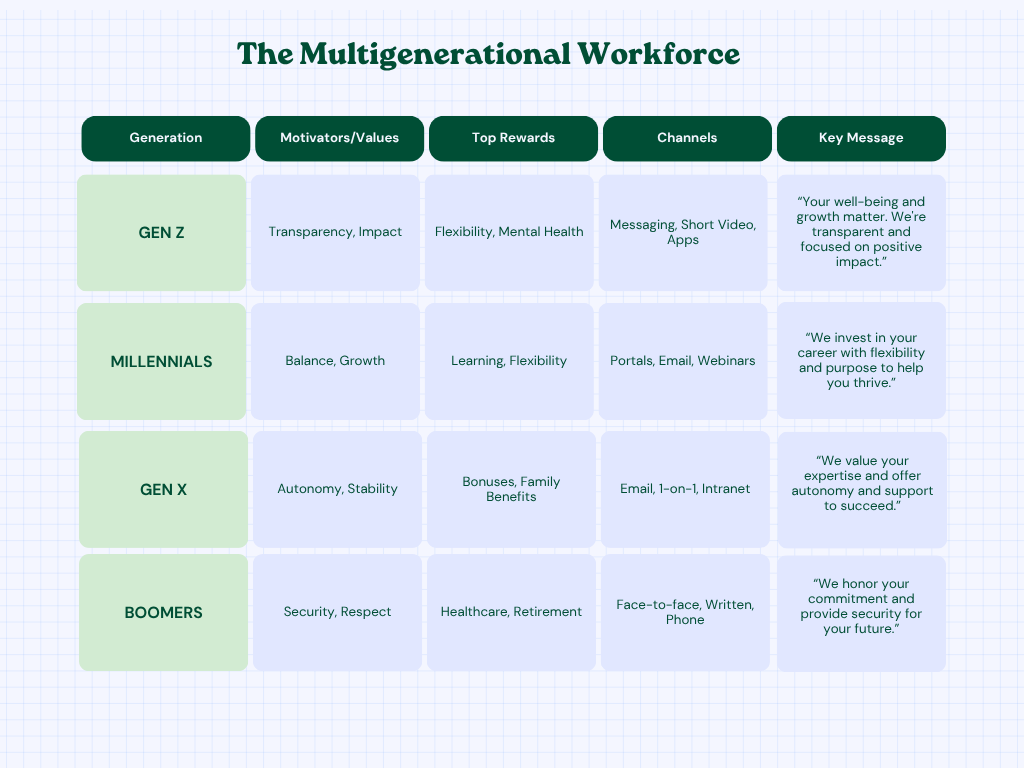
The Hybrid & Remote Workforce
Remote work changed everything about total rewards communication. You can't rely on hallway conversations or benefits fairs when half your team is working from home.
-
Digital-First Engagement: Your communication strategy must work at 3 AM when someone's reviewing their benefits options. That means digital platforms, self-service tools, and resources that don't require human interaction to access.
-
The Crucial Role of TRS: Total Rewards Statements become even more critical for remote employees. They can't pop into HR to ask questions, so your TRS needs to be comprehensive, clear, and accessible 24/7.
-
Tailoring Content for Remote Needs: Remote workers care more about home office stipends, technology allowances, and flexible work arrangements. They need to understand internet reimbursements, equipment policies, and virtual wellness programs.
Life Stages and Job Levels
People's total rewards priorities shift dramatically based on where they are in life and career.
Life Stages
-
Early Career: Fresh graduates want to understand the basics. They're excited about professional development, student loan assistance, and learning opportunities. Keep explanations simple and focus on building their benefits knowledge.
-
Mid-Career/Family Building: Family insurance, parental leave, flexible schedules, and dependent care assistance become top priorities. They're making major life decisions and need detailed information about coverage options.
-
Late Career/Pre-Retirement: Retirement planning, healthcare continuation, and succession planning dominate their thinking. They want comprehensive information about transition options and legacy benefits.
Job Levels
-
Entry-Level and Individual Contributors: Focus on immediate benefits that impact their daily lives - healthcare, PTO, and development opportunities. Use simple language and clear examples.
-
Managers and Directors: They need to understand their own benefits plus how to communicate effectively with their teams. Leadership development programs and management training become important.
-
Senior and Executive Leadership: Executive compensation, equity participation, and strategic benefits packages require sophisticated communication. They're also key influencers for total rewards strategy.
The Digital Transformation of Rewards Communication

Let's be real - nobody wants to read another boring benefits PDF. Modern employees expect their total rewards experience to be as smooth as ordering their morning coffee.
-
Centralized, Cloud-Based Platforms: Think of it as your benefits Netflix. Everything lives in one place - benefits information, total rewards calculators, enrollment tools, and communication history. Sarah can check her benefits on her phone during lunch, and Mike can access his total rewards statement from his home office at 10 PM. It just works.
-
Seamless Data Integration: Here's where it gets cool. Your HRIS, payroll system, and benefits platforms actually talk to each other now. No more calling IT to fix mismatched data. When Jessica gets promoted on Monday, her total rewards statement automatically updates by Tuesday. Magic? Nope, just good technology.
-
Robust Security: Nobody wants their health information floating around the internet. We're talking enterprise-grade security here - multi-factor authentication, encryption, the whole nine yards. But here's the kicker: it's still dead simple for employees to access their own stuff.
The Rise of Artificial Intelligence (AI) and Data Analytics
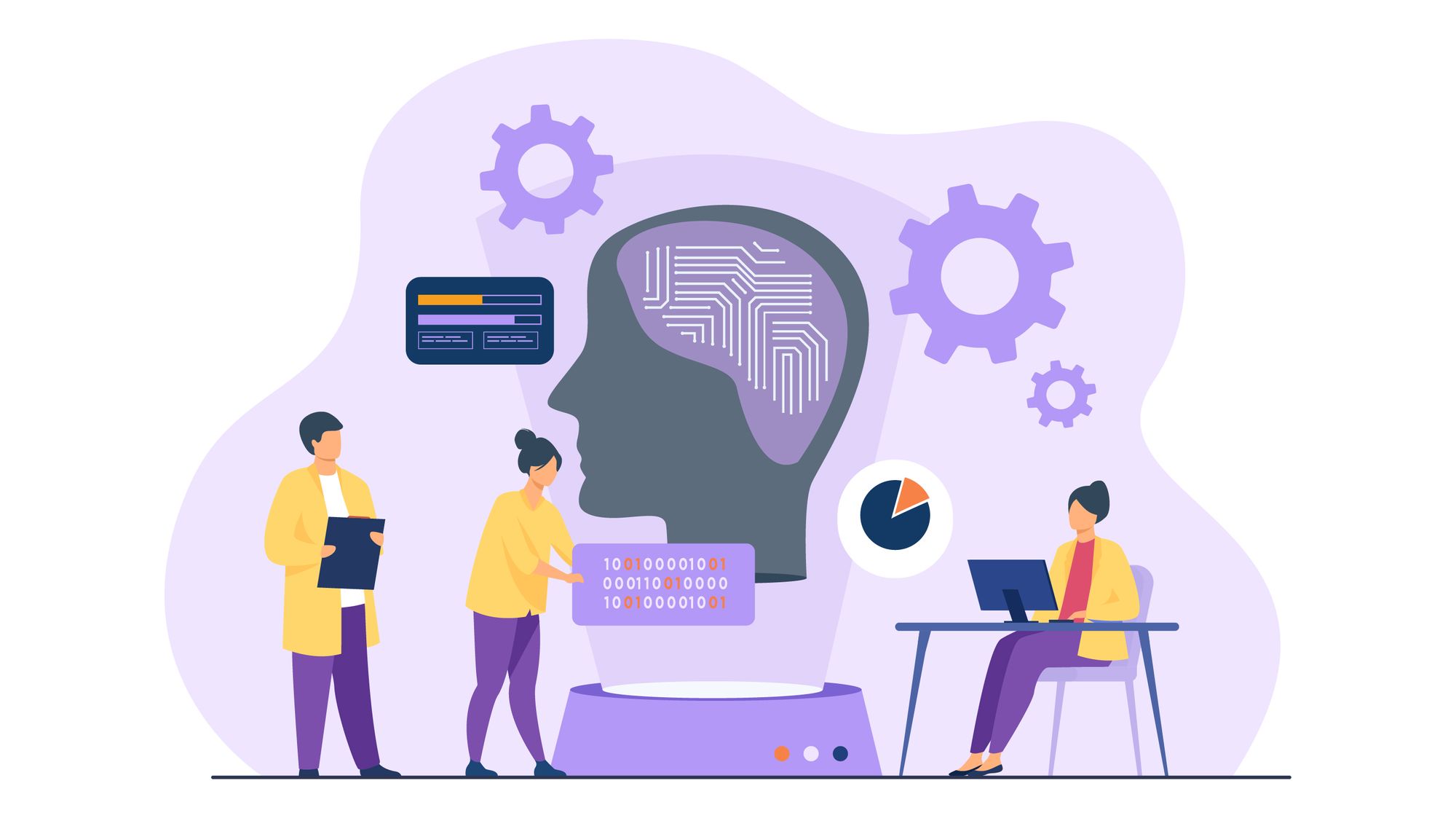
AI isn't some futuristic robot thing anymore - it's working behind the scenes right now, making total rewards communication actually intelligent.
-
Hyper-Personalization at Scale: Picture this- AI knows Sarah just had a baby and automatically sends her parental leave information. It notices Mike's approaching his 10-year anniversary and highlights his sabbatical options. It's like having a personal benefits advisor for every single employee, except it never takes vacation.
-
Augmented Intelligence for HR Teams: AI spots patterns humans miss. It'll tell you, "Hey, engineers in the Seattle office seem confused about their stock options" or "Looks like your managers need better training on flexible work benefits." It's not replacing HR professionals - it's giving them superpowers.
-
Improving Communication Content and Processes: AI even helps write better emails. It figures out which subject lines get opened, when people actually read their benefits info, and what content makes employees take action. Then it gets smarter with every message you send.
Creating a Consumer-Grade Employee Experience
Your employees binge-watch Netflix, buy everything on Amazon, and discover music on Spotify. Why should their benefits experience feel like it's stuck in 2005?
-
Interactive Decision-Support Tools: Smart calculators that actually help people make decisions. "If you contribute 6% to your 401(k) and get our company match, here's what you'll have at retirement." No more guessing games or mathematical nightmares.
-
Visual Storytelling: Instead of walls of text, think dynamic infographics and interactive charts. Show people their benefits journey with videos and visuals. Because let's face it - most people won't read a 20-page benefits guide, but they'll watch a 3-minute video that explains everything.
Here's a small study- Unilever developed a personalized, online Total Rewards Portal—an employee-facing portal that aggregated compensation and benefits via dynamic visuals (instead of static statements)—for managing around 12,000 managers across 96 countries, streamlining their access to total rewards information. (Source)
- Gamification: This might sound silly, but it works. Complete your wellness screening, earn points. Attend a financial planning session, unlock a badge. People love achieving things, even small ones. It taps into the same psychology that makes video games addictive, except this time it's helping people understand their benefits.
Overcoming the communication challenges for total rewards

1. Budget Constraints & Rising Costs
Why This Challenge Exists: Inflation has been at an all-time high along with soaring healthcare costs. This puts immense pressure on rewards programs. Rewards budgets are often rigid, which makes it difficult to keep pace with such demands.
How to Overcome This Challenge: What can you do? Optimize your recognition budget according to your rising needs. You can focus on maximizing the return on every dollar spent instead of simply trying to secure a larger budget. The idea is to adopt the mindset of “invest smarter”.
2. The "Wasted Spend" Problem
Why This Challenge Exists: When there is a significant lack of data and poor communication, it leads to higher spending on benefits that are underutilized. This happens because the organization is unaware of what its workforce actually needs or values.
How to Overcome This Challenge: You can implement a data-driven approach by analyzing benefit utilization and employee feedback. This will help you eliminate underused programs and strategically reinvest the savings into rewards that employees have indicated they truly want.
3. Insufficient Technology & Skill Gaps
Why This Challenge Exists: The primary reason for this challenge is the lack of necessary software to deliver a modern rewards experience. On top of that there is a skill gap to run a total rewards program. Why the skill gap? Because the role demands analytical and technical abilities that teams may not possess.
How to Overcome This Challenge: The first step is to make a strong business case for investing in essential technology by proving its ROI. The second step involves upskilling your team with targeted training in data analysis and modeling to meet modern strategic demands.
4. Lack of Transparency & Trust
Why This Challenge Exists: The present workforce thrives on transparency. However, many companies’ compensation systems have inconsistencies. Revealing an inequitable system without fixing it first can destroy employee trust rather than build it.
How to Overcome This Challenge: Build a foundation of fairness before pursuing transparency by conducting a pay equity audit and creating a clear job structure. This ensures that what employees eventually see will reinforce their trust, not break it.
5. The Manager Communication Gap
Why This Challenge Exists: Front-line managers are the most vital link in communication but are often the weakest. They typically lack the specific training, tools, and confidence needed to discuss complex rewards topics effectively.
How to Overcome This Challenge: Invest in dedicated and ongoing leadership development focused specifically on rewards conversations. Equip managers with practical tools like dashboards, simple talking points, and coaching to build their confidence.
6. Dealing with Economic Uncertainty
Why This Challenge Exists: The current economic situation has been volatile. This forces organizations to make difficult and rapid changes to things like bonuses or compensation goals. Communicating these changes poorly or too late creates anxiety and mistrust among employees.
How to Overcome This Challenge: Build agility into your rewards strategy so it can adapt to changing economic conditions. Communicate with any difficult decisions proactively and honestly, explaining the "why" behind them to maintain employee trust.
Conclusion!
In short, communicating total rewards isn’t just a nice-to-have; it’s essential for your business. When employees understand the full value of their compensation, benefits, and development opportunities, they’re more likely to stay, perform better, and feel genuinely valued.
To make this happen, companies need a clear, consistent, and personalized approach. Don’t just rely on annual emails—engage employees through digital portals, personalized rewards statements, and manager-led conversations. Transparency and timely communication go a long way in building trust and loyalty.
It’s not just about the money you’re spending—it’s about ensuring your employees see and appreciate it. By communicating effectively, you’ll not only improve retention and engagement but also drive greater productivity and overall success. So, take the time to make your total rewards known, and watch your workforce thrive.














